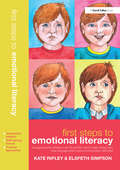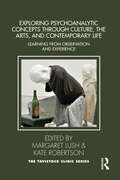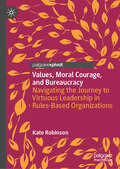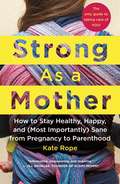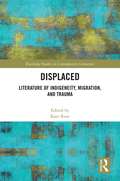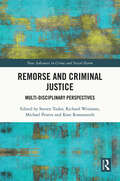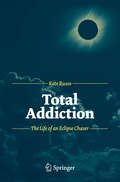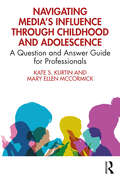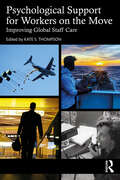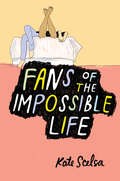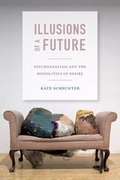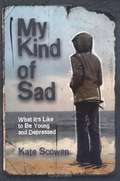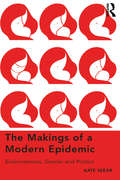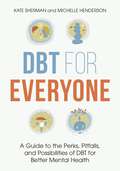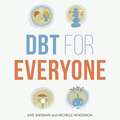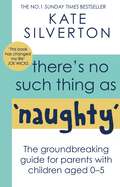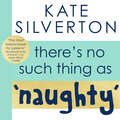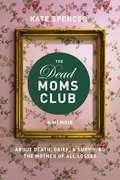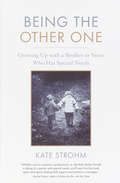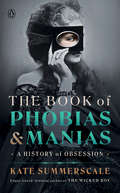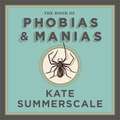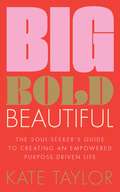- Table View
- List View
First Steps to Emotional Literacy: A programme for children in the FS & KS1 and for older children who have language and/or social communication difficulties
by Kate RipleyKate Ripley’s work in the topical area of Emotional Literacy has shown that children must first learn to discriminate and label their own emotions before they can focus on understanding other people's. This comprehensive programme is designed to assist early years practitioners help children to achieve these first important steps, the pack consists of: theoretical rationale – long and short version how the programme fits within the current legislative framework baseline assessment details pratical strategies to support the programme evaluation from pilot study bibliography and recommended materials. In addition to the book there is a CD-ROM containing a twenty minute video film showing behaviour to be addressed and intervention in action, a demonstration in powerpoint to show to colleagues and stories to use for baseline assessment.
Exploring Psychoanalytic Concepts through Culture, the Arts and Contemporary Life: Learning from Observation and Experience (Tavistock Clinic Series)
by Kate Robertson Margaret LushThis book explores how psychoanalytic ideas and thinking enhance our understanding and engagement with the creative arts and contemporary life.Many of us love to read poetry and novels and enjoy the performing arts. All of us take part in contemporary life. But how might a psychoanalytic perspective deepen our understanding or enhance our experience in these areas? What might we discover when we explore the unconscious dimensions of particular cultural artefacts and activities? Based on the work of the longstanding Psychoanalytic Studies course at the Tavistock, contributing authors draw on their experience of infant observation and psychoanalytic theory and apply them to explorations of culturally diverse and wide-ranging topics such as social work, literature, the act of littering, a Palestinian poem, and even a chart-topping Korean pop song.Blending a deep understanding of clinical work and a broad range of artistic endeavours, this book will be key reading for psychoanalysts, psychotherapists, and anyone interested in understanding how psychoanalysis can inform art and life.
Values, Moral Courage, and Bureaucracy: Navigating the Journey to Virtuous Leadership in Rules-Based Organizations
by Kate RobinsonThis book focuses on understanding values-based leadership in rules-based organizations. It assists leaders, whether they are Board Members, CEOs, Executives, or Middle to Lower Management, in understanding how to enact and embody values/virtues-based leadership. Of particular interest to readers are the discussions around primary data collected from participants at three levels of leadership in the military who responded to a vignette and interview. The results of the case study are used in conjunction with current trends or practices that are considered unethical and questionable behavior which undermine trust and integrity in organizations. By using a case study from the military, the highly codified rules-based organization illustrates the tensions, contradictions, and paradoxes that leaders face and provide a teachable moment for leaders in all industries the complexities in achieving virtue eudaimonia. In doing so, the book also illustrates the tension and complexities between an individual’s multiple subject positions, organizational rules and values, and the ability to have agency.
Strong As a Mother: How to Stay Healthy, Happy, and (Most Importantly) Sane from Pregnancy to Parenthood: The Only Guide to Taking Care of YOU!
by Kate RopeExpert, practical advice for complete mental and physical maternal healthKate Rope's Strong as a Mother is a practical and compassionate guide to preparing for a smooth start to motherhood. Everyone knows the secret to having “the Happiest Baby on the Block.” This is your guide to being the Sanest Mommy on the Block. It will prepare you with humor and grace for what lies ahead, give you the tools you need to take care of yourself, permission to struggle at times, and professional advice on how to move through it when you do. This book will become a dog-eared resource on your nightstand, offering you the same care and support that you are working so hard to provide to your child. It will help you prioritize your emotional health, set boundaries and ask for help, make choices about feeding and childcare that feel good to you, get good sleep, create a strong relationship with your partner, make self care an everyday priority, trust your instincts, and actually enjoy the hardest job you will ever love. This book is here to take care of you.
Displaced: Literature of Indigeneity, Migration, and Trauma (Routledge Studies in Contemporary Literature)
by Kate RoseThrough specific and rigorous analysis of contemporary literary texts, this book shows how writers from inside effected communities portray indigeneity, displacement, and trauma. In a world of increasing global inequality, this study aims to demonstrate how literature, and the study of it, can effect positive social change, notably in the face of global environmental, economic, and social injustice. This collection brings together a diverse and compelling array of voices from academics leading their fields around the world, to pioneer a new approach to literary analysis anchored in engagement with our changing world.
Remorse and Criminal Justice: Multi-Disciplinary Perspectives (New Advances in Crime and Social Harm)
by Richard Weisman Michael Proeve Steven Tudor Kate RossmanithThis multidisciplinary collection brings together original contributions to present the best of current thinking about the nature and place of remorse in the context of criminal justice. Despite the wide-spread and long-standing nature of interest in offender remorse, the topic has until recently been peripheral in academic studies. The authors are scholars from North America, the UK, Europe, South Africa and Australia, from diverse academic disciplines. They reflect on the role of remorse in law, for better or for worse, on how expressions of remorse are affected by the legal contexts in which they arise, and on the impact of these expressions on the individual, the court, and the community. The work is divided into four parts – Part I Judging Remorse addresses issues concerning the task of assessing remorse in the courtroom, usually prior to determining sentence. Part II Remorse Beyond the Courtroom explores the place and significance of remorse in various post-court settings. Part III Remorse, War and Social Trauma addresses remorse in the context of political violence and social trauma in the former Yugoslavia and South Africa. Finally, Part IV Reflections seeks to underscore the multidisciplinary and interdisciplinary nature of the collection as a whole, through personal and disciplinary reflections on remorse. The work provides a showcase for how diverse academic disciplines can be brought together through a focus on a common topic. As such, the collection will become a standard reference work for further research across a range of disciplines and promote inter-disciplinary dialogue.
Total Addiction
by Kate RussoSeeing a total solar eclipse is often described as a once-in-a-lifetime experience. However, for many who have experienced totality, once-in-a-lifetime is simply not enough. They want more, and are willing to go to great lengths often at great expense to repeat the experience. What is it like to experience totality? What is it about the experience that motivates these eclipse chasers? Is there an eclipse chaser personality? Can eclipse chasing actually be described as an addiction? This book describes the people who dedicate their lives to chasing their dream.
Navigating Media’s Influence Through Childhood and Adolescence: A Question and Answer Guide for Professionals
by Kate S. Kurtin Mary Ellen McCormickNavigating Media’s Influence Through Childhood and Adolescence moves through research and questions that are relevant to practicing pediatricians and therapists in their everyday practice. As we navigate post-pandemic life where screen time was unrestricted in most homes, this book has never been more important. Written by a pediatrician and a professor of media effects, this book is a vital resource for practicing mental health clinicians, counselors, psychologists, physicians, and students studying in those areas. Grounded in developmental theory, mass communication theory, current research, and acumen gained from years of clinical and teaching experience, this book gives professionals what they need to understand the colossal effect media is having on their patients. An aid to practitioners, this book is organized by developmental stage and matches specific questions related to media’s effects with explicit research-based recommendations and explanations. It is intended to be a quick resource guide for the busy professional.
Psychological Support for Workers on the Move: Improving Global Staff Care
by Kate S. ThompsonThis book examines the psychological pressures faced by workers who migrate for short periods, exploring what it means to work in high- stress environments, often on time- limited contracts and with low levels of support; and how best to protect this kind of key worker. The text addresses three central questions. First, how we can think about the experiences of workers on the move? Second, what forms of support given by who, and when, provide the best staff care? Finally, how can appropriate and timely staff support by organisations influence the lives of workers on the move? The authors, all psychological therapists and many former international workers, offer recommendations for workers in humanitarian aid, the mission sector, international contracting and seafaring, among others, taking into account the changing world of work, and the impact on this of the Covid-19 pandemic. Psychological Support for Workers on the Move provides essential guidance to organisations posting personnel internationally, to psychological and wellbeing therapists working with them, and to individual workers themselves
Fans of the Impossible Life
by Kate Scelsa<P>A captivating and profound debut novel about complicated love and the friendships that have the power to transform you forever. <P>Mira is starting over at Saint Francis Prep. She promised her parents she would at least try to pretend that she could act like a functioning human this time, not a girl who can't get out of bed for days on end, who only feels awake when she's with Sebby. <P>Jeremy is the painfully shy art nerd at Saint Francis who's been in self-imposed isolation after an incident that ruined his last year of school. When he sees Sebby for the first time across the school lawn, it's as if he's been expecting this blond, lanky boy with mischief glinting in his eye. <P>Sebby, Mira's gay best friend, is a boy who seems to carry sunlight around with him. Even as life in his foster home starts to take its toll, Sebby and Mira together craft a world of magic rituals and impromptu road trips, designed to fix the broken parts of their lives.' <P>As Jeremy finds himself drawn into Sebby and Mira's world, he begins to understand the secrets that they hide in order to protect themselves, to keep each other safe from those who don't understand their quest to live for the impossible.
Illusions of a Future: Psychoanalysis and the Biopolitics of Desire
by Kate SchechterA pioneering ethnography of psychoanalysis, Illusions of a Future explores the political economy of private therapeutic labor within industrialized medicine. Focusing on psychoanalysis in Chicago, a historically important location in the development and institutionalization of psychoanalysis in the United States, Kate Schechter examines the nexus of theory, practice, and institutional form in the original instituting of psychoanalysis, its normalization, and now its "crisis." She describes how contemporary analysts struggle to maintain conceptions of themselves as capable of deciding what psychoanalysis is and how to regulate it in order to prevail over market demands for the efficiency and standardization of mental health treatments.In the process, Schechter shows how deeply imbricated the analyst-patient relationship is in this effort. Since the mid-twentieth century, the "real" relationship between analyst and patient is no longer the unremarked background of analysis but its very site. Psychoanalysts seek to validate the centrality of this relationship with theory and, through codified "standards," to claim it as a privileged technique. It has become the means by which psychoanalysts, in seeking to protect their disciplinary autonomy, have unwittingly bound themselves to a neoliberal discourse of regulation.
My Kind of Sad: What It's Like to Be Young and Depressed
by Kate ScowenHelping teens deal with depression. "Once you've been through it and you're able to get out of it, then you can handle pretty much anything." - Caroline, age 19. Written to be read by teens themselves, My Kind of Sad lays out the facts on moodiness, depression, and the stresses of teenaged life. From the factors affecting how kids feel to the signs of serious depression, the book explores youth-specific mental health issues and offers teens expert advice on how to find help for themselves or help a friend in need. To help kids differentiate between general worries and something more serious, the topics include: reactive depression (a mood) vs. clinical depression (a mood disorder); bipolar disorder; anxiety disorders (panic attacks, post traumatic stress disorder); disordered eating (how food affects mood) vs. eating disorders (diseases that can kill); self-mutilation (cutting); suicide warning signs and treatment options. Along with constructive guidance from professionals and stats from the latest studies, the book shares thoughts and feelings from teens who have experienced different forms of depression. Complete with pages of resources to help learn more, My Kind of Sad is a valuable ally in the battle against hopelessness.
The Makings of a Modern Epidemic: Endometriosis, Gender and Politics
by Kate SeearSince its ’discovery’ some 150 years ago, thinking about endometriosis has changed. With current estimates identifying it as more common than breast and ovarian cancer, this chronic, incurable gynaecological condition has emerged as a ’modern epidemic’, distinctive in being perhaps the only global epidemic peculiar to women. This timely book addresses the scholarly neglect of endometriosis by the social sciences, offering a critical assessment of one of the world’s most common - and burdensome - health problems for women. Drawing on a range of theoretical perspectives, including science and technology studies, feminist theory and queer theory, The Makings of a Modern Epidemic explores the symbolic, discursive and material dimensions of the condition. It demonstrates how shifts in thinking about gender, the body, race, modernity and philosophies of health have shaped the epidemic, and produces a compelling account of endometriosis as a highly politicised and grossly neglected disease. Drawing upon rich empirical data, including in-depth interviews with women who have endometriosis and medical and self-help literature, this ground-breaking volume will appeal to scholars and students across the social sciences with interests in gender studies, science and technology studies and the sociology and anthropology of medicine, health and the body.
DBT for Everyone: A Guide to the Perks, Pitfalls, and Possibilities of DBT for Better Mental Health
by Michelle Henderson Kate ShermanDBT skills can be a fantastic way to approach life's challenges. But where do you start? This down-to-earth guide walks you through the four DBT modules, mindfulness, distress tolerance, emotion regulation, and interpersonal effectiveness. Each chapter explains how to practice the key skills and dives into the authors' own experiences to explore what works, what doesn't, and which skills work best for particular challenges. Journaling prompts help you work out how to fit the skills into your own day-to-day life, so you can make changes that work for you.DBT works by helping you to understand difficult emotions and develop skills to regulate them in a healthy way. Whether you struggle with mental health difficulties, or just want to improve the way you handle everyday stress and challenges, this book will filter out the jargon and show you how to use DBT skills in real life.
DBT for Everyone: A Guide to the Perks, Pitfalls, and Possibilities of DBT for Better Mental Health
by Michelle Henderson Kate ShermanDBT skills can be a fantastic way to approach life's challenges. But where do you start? This down-to-earth guide walks you through the four DBT modules, mindfulness, distress tolerance, emotion regulation, and interpersonal effectiveness. Each chapter explains how to practice the key skills and dives into the authors' own experiences to explore what works, what doesn't, and which skills work best for particular challenges. Journaling prompts help you work out how to fit the skills into your own day-to-day life, so you can make changes that work for you.DBT works by helping you to understand difficult emotions and develop skills to regulate them in a healthy way. Whether you struggle with mental health difficulties, or just want to improve the way you handle everyday stress and challenges, this book will filter out the jargon and show you how to use DBT skills in real life.
There's No Such Thing As 'Naughty': The groundbreaking guide for parents with children aged 0-5: THE #1 SUNDAY TIMES BESTSELLER
by Kate SilvertonTHE #1 SUNDAY TIMES BESTSELLER'This book has changed my life' Joe Wicks'As a parenting support book this is in a class of its own . . . It is perhaps the most helpful book for parents of children of any age' Professor Peter Fonagy, CEO Anna Freud National Centre for Children & Families'This is a book that will change lives' Dr Suzanne Zeedyk, Infant Psychologist'This book is absolutely brilliant! I love that it is about parenting a healthy brain' Dr Guddi Singh, Paediatrician and Health CampaignerWant to know the secret to tackling tantrums and tears, stopping squabbles in seconds AND lay the foundations for your child's good mental health in the process? In There's No Such Thing As 'Naughty', mum to two young children, journalist and children's mental health advocate Kate Silverton shares her groundbreaking new approach to parenting under-fives that helps to make family life so much easier and and certainly a lot more fun!Kate's unique strategies, easy-to-follow scripts and simple techniques will enable you to manage those tricky everyday challenges with ease - and help you to enjoy the strongest bond possible with your child, both now and in the years ahead. Endorsed by leading figures in the field of children's mental health, at the heart of the book is a simple and revelatory way to understand how your child's brain develops and how it influences their behaviour. Rooted in the latest science - explained really simply - this engaging, accessible and warm parenting guide will redefine how you see and raise your children, with a new understanding that for under-fives, there can be no such thing as 'naughty'.
There's No Such Thing As 'Naughty': The groundbreaking guide for parents with children aged 0-5: THE #1 SUNDAY TIMES BESTSELLER
by Kate SilvertonTHE #1 SUNDAY TIMES BESTSELLER'This book has changed my life' Joe Wicks'As a parenting support book this is in a class of its own . . . It is perhaps the most helpful book for parents of children of any age' Professor Peter Fonagy, CEO Anna Freud National Centre for Children & Families'This is a book that will change lives' Dr Suzanne Zeedyk, Infant Psychologist'This book is absolutely brilliant! I love that it is about parenting a healthy brain' Dr Guddi Singh, Paediatrician and Health CampaignerWant to know the secret to tackling tantrums and tears, stopping squabbles in seconds AND lay the foundations for your child's good mental health in the process? In There's No Such Thing As 'Naughty', mum to two young children, journalist and children's mental health advocate Kate Silverton shares her groundbreaking new approach to parenting under-fives that helps to make family life so much easier and and certainly a lot more fun!Kate's unique strategies, easy-to-follow scripts and simple techniques will enable you to manage those tricky everyday challenges with ease - and help you to enjoy the strongest bond possible with your child, both now and in the years ahead. Endorsed by leading figures in the field of children's mental health, at the heart of the book is a simple and revelatory way to understand how your child's brain develops and how it influences their behaviour. Rooted in the latest science - explained really simply - this engaging, accessible and warm parenting guide will redefine how you see and raise your children, with a new understanding that for under-fives, there can be no such thing as 'naughty'.
There's No Such Thing As 'Naughty': The groundbreaking guide for parents with children aged 0-5: THE #1 SUNDAY TIMES BESTSELLER
by Kate SilvertonTHE #1 SUNDAY TIMES BESTSELLER'This book has changed my life' Joe Wicks'As a parenting support book this is in a class of its own . . . It is perhaps the most helpful book for parents of children of any age' Professor Peter Fonagy, CEO Anna Freud National Centre for Children & Families'This is a book that will change lives' Dr Suzanne Zeedyk, Infant Psychologist'This book is absolutely brilliant! I love that it is about parenting a healthy brain' Dr Guddi Singh, Paediatrician and Health CampaignerWant to know the secret to tackling tantrums and tears, stopping squabbles in seconds AND lay the foundations for your child's good mental health in the process? In There's No Such Thing As 'Naughty', mum to two young children, journalist and children's mental health advocate Kate Silverton shares her groundbreaking new approach to parenting under-fives that helps to make family life so much easier and and certainly a lot more fun!Kate's unique strategies, easy-to-follow scripts and simple techniques will enable you to manage those tricky everyday challenges with ease - and help you to enjoy the strongest bond possible with your child, both now and in the years ahead. Endorsed by leading figures in the field of children's mental health, at the heart of the book is a simple and revelatory way to understand how your child's brain develops and how it influences their behaviour. Rooted in the latest science - explained really simply - this engaging, accessible and warm parenting guide will redefine how you see and raise your children, with a new understanding that for under-fives, there can be no such thing as 'naughty'.
The Dead Moms Club: A Memoir about Death, Grief, and Surviving the Mother of All Losses
by Kate SpencerKate Spencer lost her mom to cancer when she was 27. In The Dead Moms Club, she walks readers through her experience of stumbling through grief and loss, and helps them to get through it, too. This isn't a weepy, sentimental story, but rather a frank, up-front look at what it means to go through gruesome grief and come out on the other side.An empathetic read, The Dead Moms Club covers how losing her mother changed nearly everything in her life: both men and women readers who have lost parents or experienced grief of this magnitude will be comforted and consoled. Spencer even concludes each chapter with a cheeky but useful tip for readers (like the "It's None of Your Business Card" to copy and hand out to nosy strangers asking about your passed loved one).
Being the Other One: Growing Up With A Brother Or Sister Who Has Special Needs
by Kate StrohmWhen there's a disabled child in the family, how are normally developing siblings affected? According to Kate Strohm, a counselor and health educator, siblings of the disabled face particular emotional challenges that are often overlooked. Able siblings commonly struggle with feelings of isolation, grief, anger, and anxiety—and these and other emotional issues can have lifelong effects.Being the Other One is based on the author's own experience (as a sibling of a sister with cerebral palsy) and on extensive interviews she conducted with siblings of all ages. In clear and compassionate terms, Strohm explores the often secret feelings of siblings and offers valuable strategies for coping with the challenges they face.Being the Other One reveals the difficulties faced by siblings at all stages of life, from early childhood through adulthood, when siblings must often assume responsibility for the care of their disabled brothers and sisters. Though the book looks honestly at the many challenges that siblings face, it is full of encouragement and practical strategies. Strohm emphasizes that when siblings are able to clearly identify and openly express their feelings and concerns—and when parents and health professionals offer the needed support—siblings can thrive. This book includes writing exercises for personal exploration and a substantial resources section listing helpful books, organizations, and websites.
The Book of Phobias and Manias: A History of Obsession
by Kate SummerscaleFrom the winner of the Edgar Award and the Samuel Johnson Prize, a cultural history of &“everyday madness&”The Book of Phobias and Manias is a thrilling compendium of 99 obsessions that have shaped us all, the rare and the familiar, from ablutophobia (a horror of washing) to syllogomania (a compulsion to hoard) to zoophobia (a fear of animals). Phobias and manias are deeply personal experiences, and among the most common anxiety disorders of our time, but they are also clues to our shared past. The award-winning author Kate Summerscale uses rich and riveting case studies to trace the origins of our obsessions, unearthing a history of human strangeness, from the middle ages to the present day, and a wealth of explanations for some of our most powerful aversions and desires.
The Book of Phobias and Manias: A History of the World in 99 Obsessions
by Kate SummerscaleEver been struck dumb when speaking in public? You might be suffering from glossophobia. Do your book-buying habits verge on bibliomania? Do you recoil in arachnophobic horror at the sight of a spider - or twitch with nomophobia when you misplace your mobile phone?Our fears and compulsions often feel like part of our deepest selves - yet they're bound up in the currents of the world around us. This thrilling compendium of 99 phobias and manias, rare and familiar, delves into the obsessions that shape us all. Award-winning author Kate Summerscale takes us from the Middle Ages to the present day, using rich and riveting case studies to trace the links between the private and the public, thepersonal and the political.
Big Bold Beautiful: The soul-seeker's guide to creating an empowered purpose-driven life
by Kate TaylorBig, Bold, Beautiful is the ultimate empowerment guide that takes you on a journey of discovery to connect to your authentic self, get your sparkle back and create a life where you can thrive – not just survive.Life design and empowerment coach Kate Taylor uses a unique mix of psychological tools and spiritual practices to form her Practical Magic coaching method. She blends straight-talking strategy with a dash of spiritual sauce to create an alchemy of measured action combined with a connection to something greater than us – where the true magic happens.Divided into seven steps, Kate brings you easy-to-implement practical tools sprinkled with a dash of woo, so that you can create the vibrant, powerful change you've been yearning for. Join Kate as she shows you how to embrace a melting pot of modalities. Try using SMART targets alongside pendulums to set goals; address your inner critic by challenging negative thought patterns and performing an elements release ritual on a Full Moon; or seek self-empowerment through rewiring limiting beliefs using NLP and tapping into the power of crystals.
Big Bold Beautiful: The soul-seeker's guide to creating an empowered purpose-driven life
by Kate TaylorBig, Bold, Beautiful is the ultimate empowerment guide that takes you on a journey of discovery to connect to your authentic self, get your sparkle back and create a life where you can thrive – not just survive.Life design and empowerment coach Kate Taylor uses a unique mix of psychological tools and spiritual practices to form her Practical Magic coaching method. She blends straight-talking strategy with a dash of spiritual sauce to create an alchemy of measured action combined with a connection to something greater than us – where the true magic happens.Divided into seven steps, Kate brings you easy-to-implement practical tools sprinkled with a dash of woo, so that you can create the vibrant, powerful change you've been yearning for. Join Kate as she shows you how to embrace a melting pot of modalities. Try using SMART targets alongside pendulums to set goals; address your inner critic by challenging negative thought patterns and performing an elements release ritual on a Full Moon; or seek self-empowerment through rewiring limiting beliefs using NLP and tapping into the power of crystals.
Big Bold Beautiful: The soul-seeker's guide to creating an empowered purpose-driven life
by Kate TaylorBig, Bold, Beautiful is the ultimate empowerment guide that takes you on a journey of discovery to connect to your authentic self, get your sparkle back and create a life where you can thrive – not just survive.Life design and empowerment coach Kate Taylor uses a unique mix of psychological tools and spiritual practices to form her Practical Magic coaching method. She blends straight-talking strategy with a dash of spiritual sauce to create an alchemy of measured action combined with a connection to something greater than us – where the true magic happens.Divided into seven steps, Kate brings you easy-to-implement practical tools sprinkled with a dash of woo, so that you can create the vibrant, powerful change you've been yearning for. Join Kate as she shows you how to embrace a melting pot of modalities. Try using SMART targets alongside pendulums to set goals; address your inner critic by challenging negative thought patterns and performing an elements release ritual on a Full Moon; or seek self-empowerment through rewiring limiting beliefs using NLP and tapping into the power of crystals.
